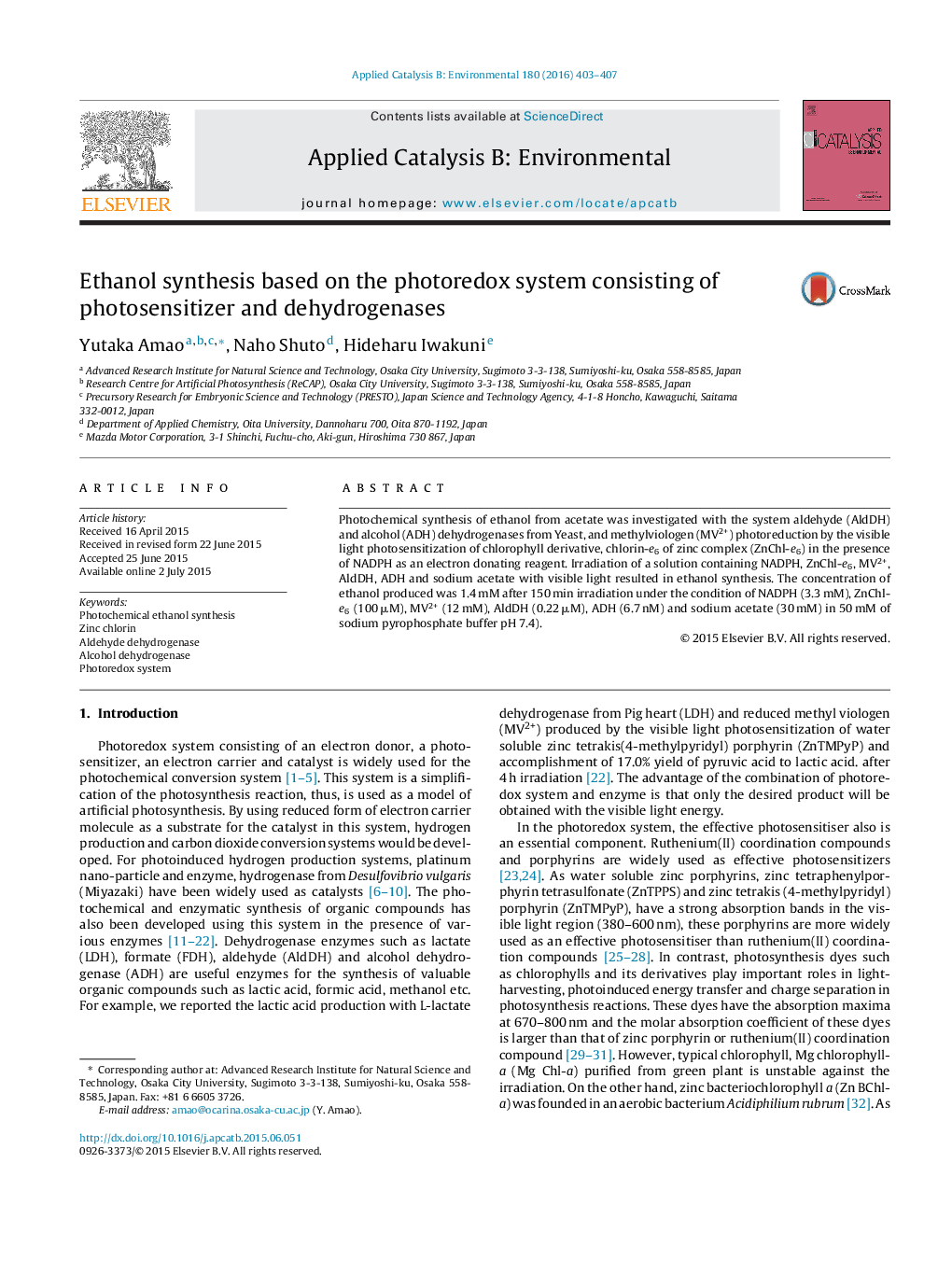| Article ID | Journal | Published Year | Pages | File Type |
|---|---|---|---|---|
| 45257 | Applied Catalysis B: Environmental | 2016 | 5 Pages |
•Synthesis of ethanol from acetate was studied using the photoredox system with enzyme.•Photoredox system was consisted of NADPH, zinc chlorin-e6 and methylviologen.•Aldehyde and alcohol dehydrogenase were used as the enzyme for ethanol synthesis.•The concentration of ethanol produced increased with increasing irradiation time.•The conversion yield of acetate to ethanol was reached to 5% under optimum condition.
Photochemical synthesis of ethanol from acetate was investigated with the system aldehyde (AldDH) and alcohol (ADH) dehydrogenases from Yeast, and methylviologen (MV2+) photoreduction by the visible light photosensitization of chlorophyll derivative, chlorin-e6 of zinc complex (ZnChl-e6) in the presence of NADPH as an electron donating reagent. Irradiation of a solution containing NADPH, ZnChl-e6, MV2+, AldDH, ADH and sodium acetate with visible light resulted in ethanol synthesis. The concentration of ethanol produced was 1.4 mM after 150 min irradiation under the condition of NADPH (3.3 mM), ZnChl-e6 (100 μM), MV2+ (12 mM), AldDH (0.22 μM), ADH (6.7 nM) and sodium acetate (30 mM) in 50 mM of sodium pyrophosphate buffer pH 7.4).
Graphical abstractFigure optionsDownload full-size imageDownload as PowerPoint slide
